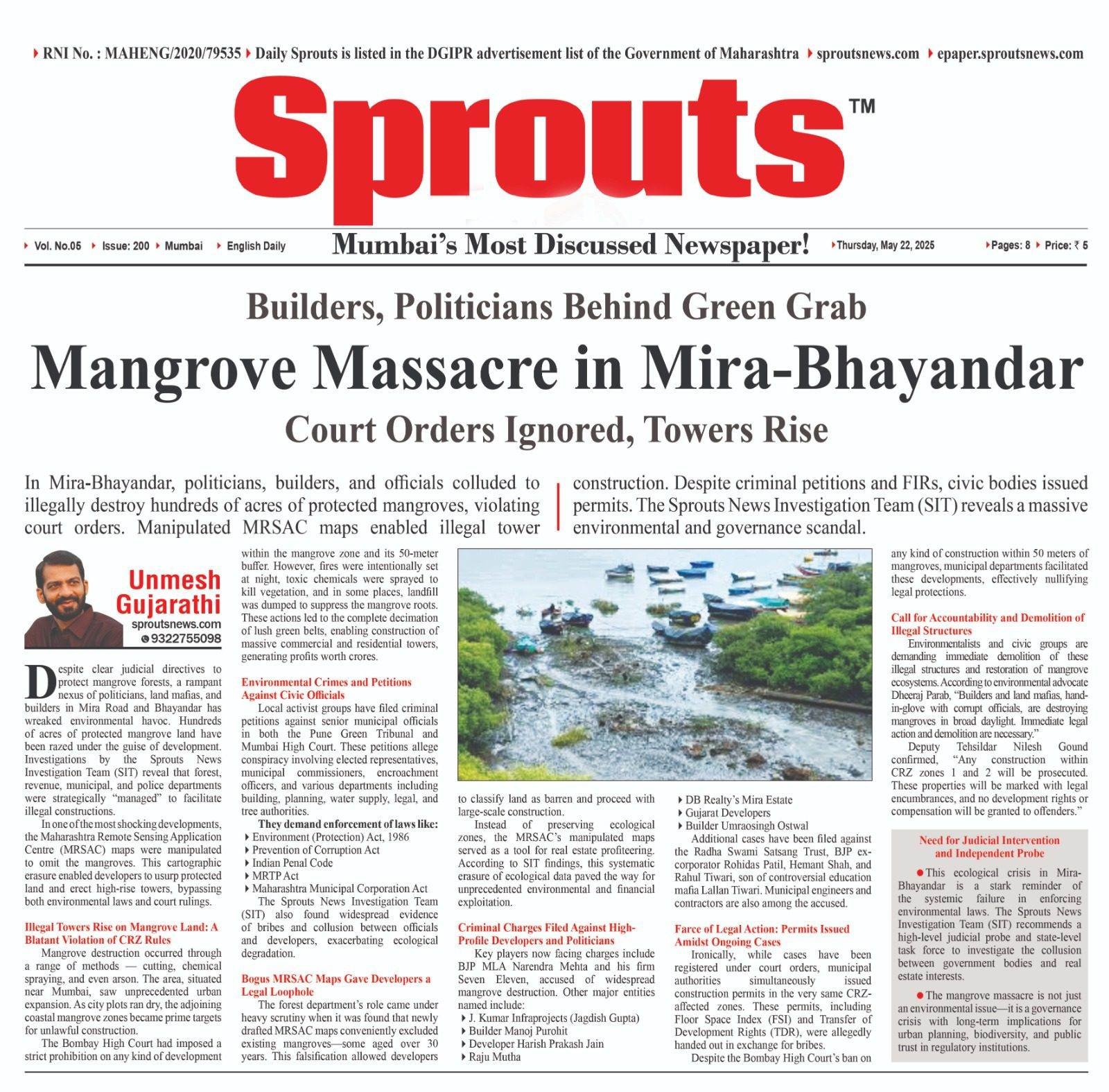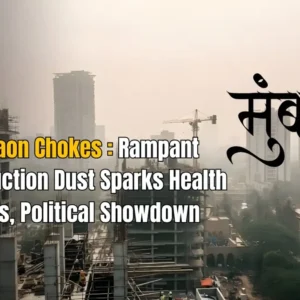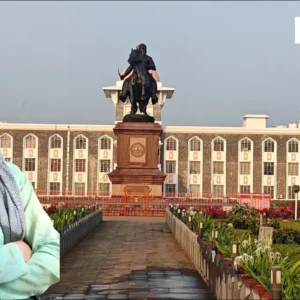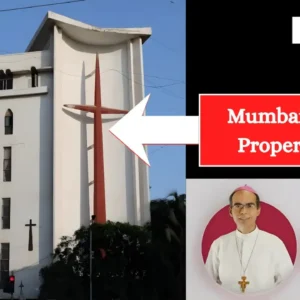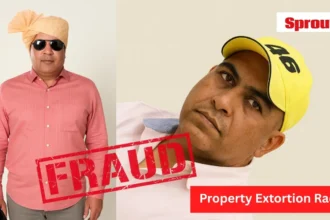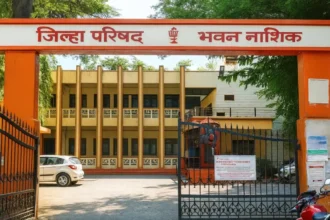Mangrove Massacre in Mira-Bhayandar
• Builders, Politicians Behind Green Grab
• Court Orders Ignored, Towers Rise
Unmesh Gujarathi
Sprouts News Exclusive
Contact: +91 9322755098
Sprouts News Exclusive
Contact: +91 9322755098
In Mira-Bhayandar, politicians, builders, and officials colluded to illegally destroy hundreds of acres of protected mangroves, violating court orders. Manipulated MRSAC maps enabled illegal tower construction. Despite criminal petitions and FIRs, civic bodies issued permits. The Sprouts News Investigation Team (SIT) reveals a massive environmental and governance scandal.
Contents
- Mangrove Massacre in Mira-Bhayandar
- • Builders, Politicians Behind Green Grab
- • Court Orders Ignored, Towers Rise
- Mangrove Destruction in Mira-Bhayandar Despite Court Orders
- Illegal Towers Rise on Mangrove Land: A Blatant Violation of CRZ Rules
- Environmental Crimes and Petitions Against Civic Officials
- Bogus MRSAC Maps Gave Developers a Legal Loophole
- Criminal Charges Filed Against High-Profile Developers and Politicians
- Farce of Legal Action: Permits Issued Amidst Ongoing Cases
- Also Read: ₹139 Cr PMC Tender, But Guards Still Unpaid for Months By Eagle Security and Personnel Services Pvt. Ltd.
- Related Article: ACB Raids on Education Mafia’s College.
- Call for Accountability and Demolition of Illegal Structures
- Need for Judicial Intervention and Independent Probe
Mangrove Destruction in Mira-Bhayandar Despite Court Orders
Despite clear judicial directives to protect mangrove forests, a rampant nexus of politicians, land mafias, and builders in Mira Road and Bhayandar has wreaked environmental havoc. Hundreds of acres of protected mangrove land have been razed under the guise of development. Investigations by the Sprouts News Investigation Team (SIT) reveal that forest, revenue, municipal, and police departments were strategically “managed” to facilitate illegal constructions.
In one of the most shocking developments, the Maharashtra Remote Sensing Application Centre (MRSAC) maps were manipulated to omit the mangroves. This cartographic erasure enabled developers to usurp protected land and erect high-rise towers, bypassing both environmental laws and court rulings.
Illegal Towers Rise on Mangrove Land: A Blatant Violation of CRZ Rules
Mangrove destruction occurred through a range of methods — cutting, chemical spraying, and even arson. The area, situated near Mumbai, saw unprecedented urban expansion. As city plots ran dry, the adjoining coastal mangrove zones became prime targets for unlawful construction.
The Bombay High Court had imposed a strict prohibition on any kind of development within the mangrove zone and its 50-meter buffer. However, fires were intentionally set at night, toxic chemicals were sprayed to kill vegetation, and in some places, landfill was dumped to suppress the mangrove roots. These actions led to the complete decimation of lush green belts, enabling construction of massive commercial and residential towers, generating profits worth crores.
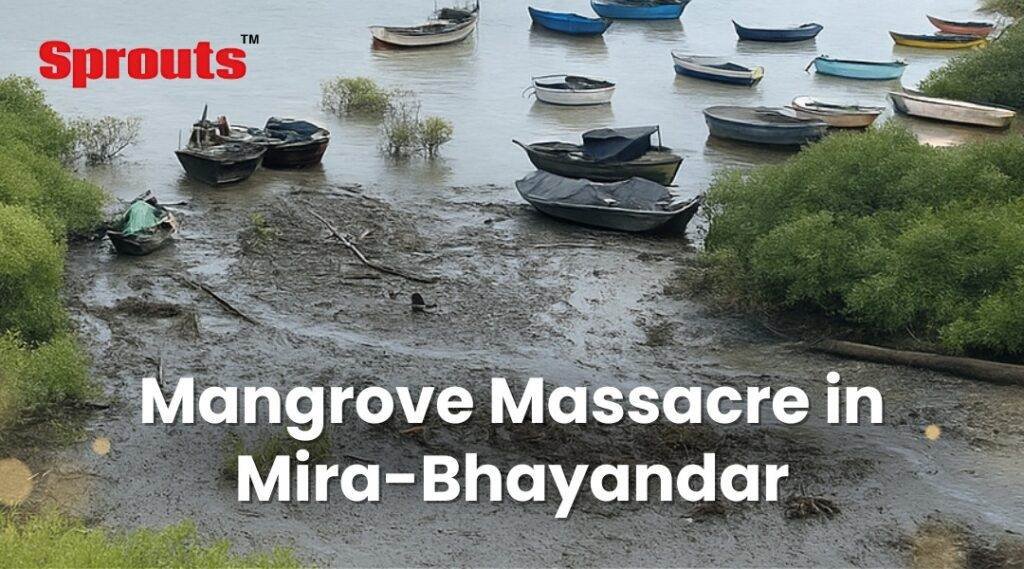
Environmental Crimes and Petitions Against Civic Officials
Local activist groups have filed criminal petitions against senior municipal officials in both the Pune Green Tribunal and Mumbai High Court. These petitions allege conspiracy involving elected representatives, municipal commissioners, encroachment officers, and various departments including building, planning, water supply, legal, and tree authorities.
They demand enforcement of laws like:
•Environment (Protection) Act, 1986
•Prevention of Corruption Act
•Indian Penal Code
•MRTP Act
•Maharashtra Municipal Corporation Act
The Sprouts News Investigation Team (SIT) also found widespread evidence of bribes and collusion between officials and developers, exacerbating ecological degradation.
Bogus MRSAC Maps Gave Developers a Legal Loophole
The forest department’s role came under heavy scrutiny when it was found that newly drafted MRSAC maps conveniently excluded existing mangroves—some aged over 30 years. This falsification allowed developers to classify land as barren and proceed with large-scale construction.
Instead of preserving ecological zones, the MRSAC’s manipulated maps served as a tool for real estate profiteering. According to SIT findings, this systematic erasure of ecological data paved the way for unprecedented environmental and financial exploitation.
Criminal Charges Filed Against High-Profile Developers and Politicians
Key players now facing charges include BJP MLA Narendra Mehta and his firm Seven Eleven, accused of widespread mangrove destruction. Other major entities named include:
•J. Kumar Infraprojects (Jagdish Gupta)
•Builder Manoj Purohit
•Developer Harish Prakash Jain
•Raju Mutha
•DB Realty’s Mira Estate
•Gujarat Developers
•Builder Umraosingh Ostwal
Additional cases have been filed against the Radha Swami Satsang Trust, BJP ex-corporator Rohidas Patil, Hemant Shah, and Rahul Tiwari, son of controversial education mafia Lallan Tiwari. Municipal engineers and contractors are also among the accused.

Farce of Legal Action: Permits Issued Amidst Ongoing Cases
Ironically, while cases have been registered under court orders, municipal authorities simultaneously issued construction permits in the very same CRZ-affected zones. These permits, including Floor Space Index (FSI) and Transfer of Development Rights (TDR), were allegedly handed out in exchange for bribes.
Despite the Bombay High Court’s ban on any kind of construction within 50 meters of mangroves, municipal departments facilitated these developments, effectively nullifying legal protections.
Also Read: ₹139 Cr PMC Tender, But Guards Still Unpaid for Months By Eagle Security and Personnel Services Pvt. Ltd.
Related Article: ACB Raids on Education Mafia’s College.
Call for Accountability and Demolition of Illegal Structures
Environmentalists and civic groups are demanding immediate demolition of these illegal structures and restoration of mangrove ecosystems. According to environmental advocate Dheeraj Parab, “Builders and land mafias, hand-in-glove with corrupt officials, are destroying mangroves in broad daylight. Immediate legal action and demolition are necessary.”
Deputy Tehsildar Nilesh Gound confirmed, “Any construction within CRZ zones 1 and 2 will be prosecuted. These properties will be marked with legal encumbrances, and no development rights or compensation will be granted to offenders.”
Need for Judicial Intervention and Independent Probe
This ecological crisis in Mira-Bhayandar is a stark reminder of the systemic failure in enforcing environmental laws. The Sprouts News Investigation Team (SIT) recommends a high-level judicial probe and state-level task force to investigate the collusion between government bodies and real estate interests.
The mangrove massacre is not just an environmental issue—it is a governance crisis with long-term implications for urban planning, biodiversity, and public trust in regulatory institutions.



